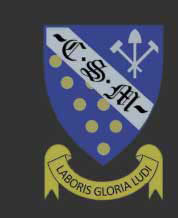  |
CSM Rock Collection
|
Anorthosite, IG09AN01
|
DescriptionAnorthosite from the Rustenburg Layered Suite of the Bushveld Igneous Complex in South Africa. The rock is composed of more than 90% plagioclase with minor orthopyroxene and chromite. The rock represents a cumulate where plagioclase has been preferentially concentrated from basaltic magma. |
Hand specimen
|
|
|
Thin section |
Thin section in plane polarised light (full section)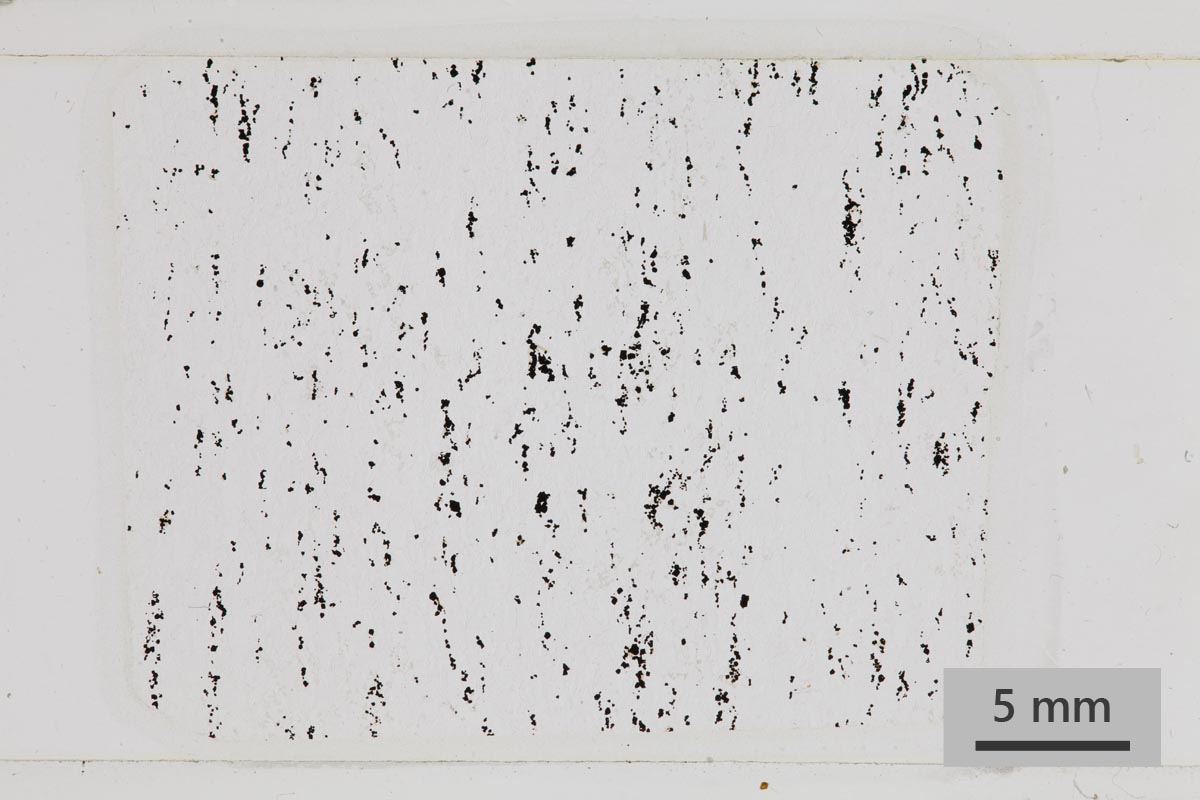 In plane polarised light, the dominance of plagioclase (clear, appearing white) is very apparent. Bands of chromite grains (opaque, appearing black) define the banding within the rock. Close inspection reveals very small amounts of orthopyroxene (light grey) that is typically concentrated in the areas with chromite. |
Thin section in cross polarised light (full section)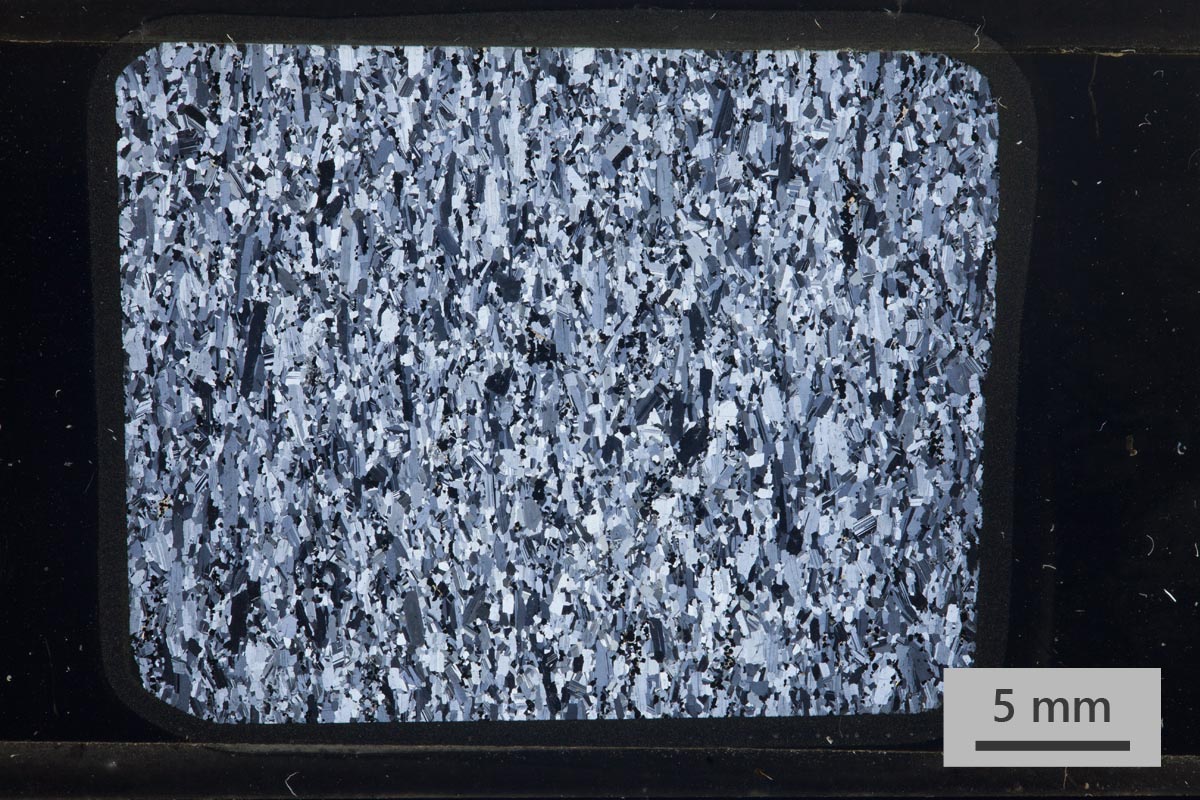 Under crossed polarisers, the individual plagioclase grains can be recognised with the typical multiple twinning that is characteristic for the mineral in the plutonic environment. Chromite appears as small, opaque crystals that are concentrated into bands. Orthopyroxene is hardly visible in this image. Plagioclase grains display a preferred orientation that is parallel to these bands. |
Thin section, detail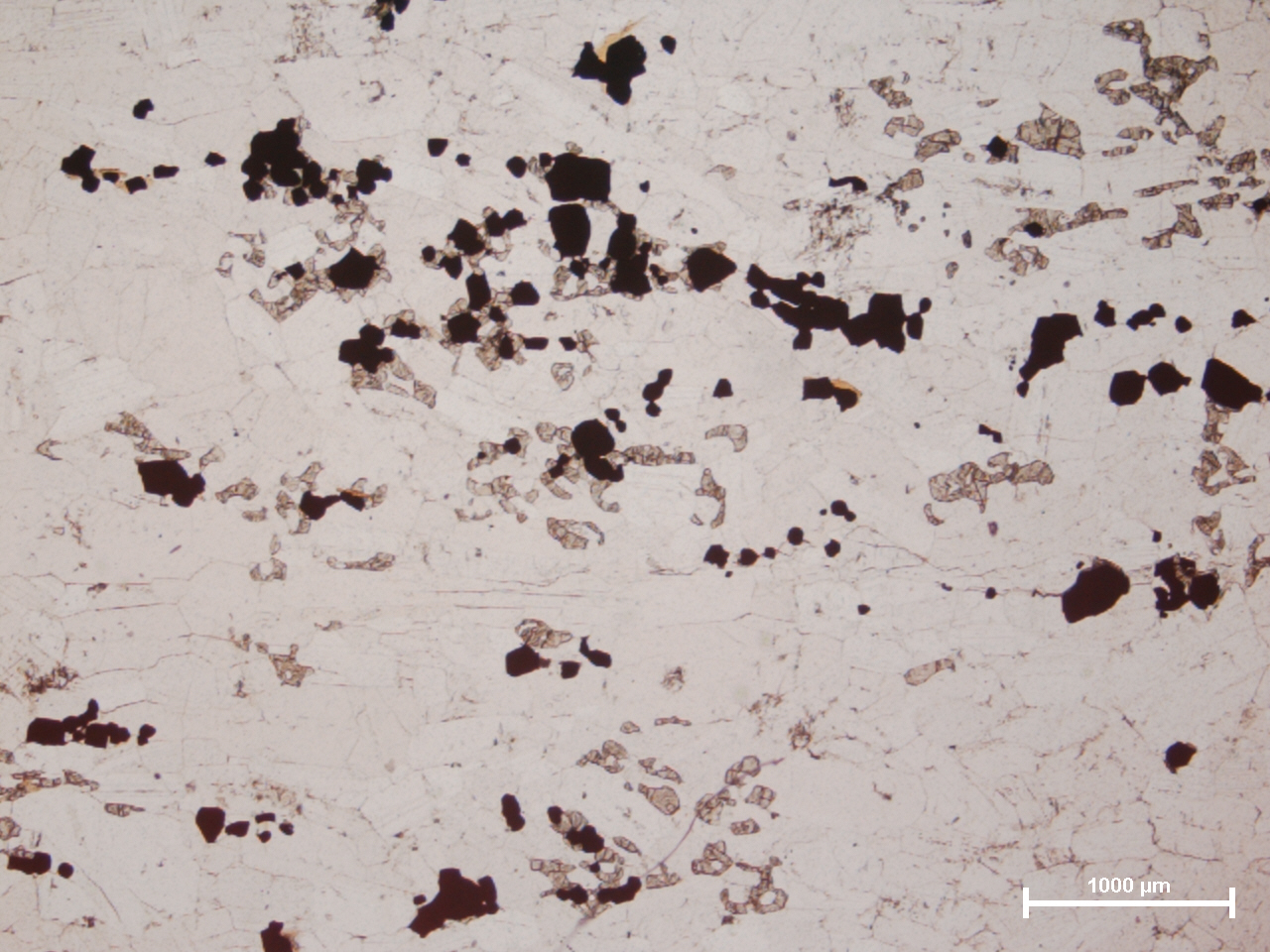
In this higher magnification view under plane polarised
light, the opthopyroxene becomes apparent. The dominant
plagioclase (low relief, colourless - white in the image)
dominates with chromite (black) and small interstitial
grains of orthopyroxene (medium relief, greyish brown). A
few grains of biotite (low relief, strongly brown) can
also be observed.
In this higher magnification view under crossed polarised light, the low interference colours of the opthopyroxene becomes apparent. The multiple twinning of plagioclase is also visible. Note that the plagioclase crystals have relatively straight grain boundaries that meet in 120º triple junctions indicating textural maturity.
In this high magnification view under plane polarised
light, the medium relief and cleavage of the orthopyroxene
is particularly visible. 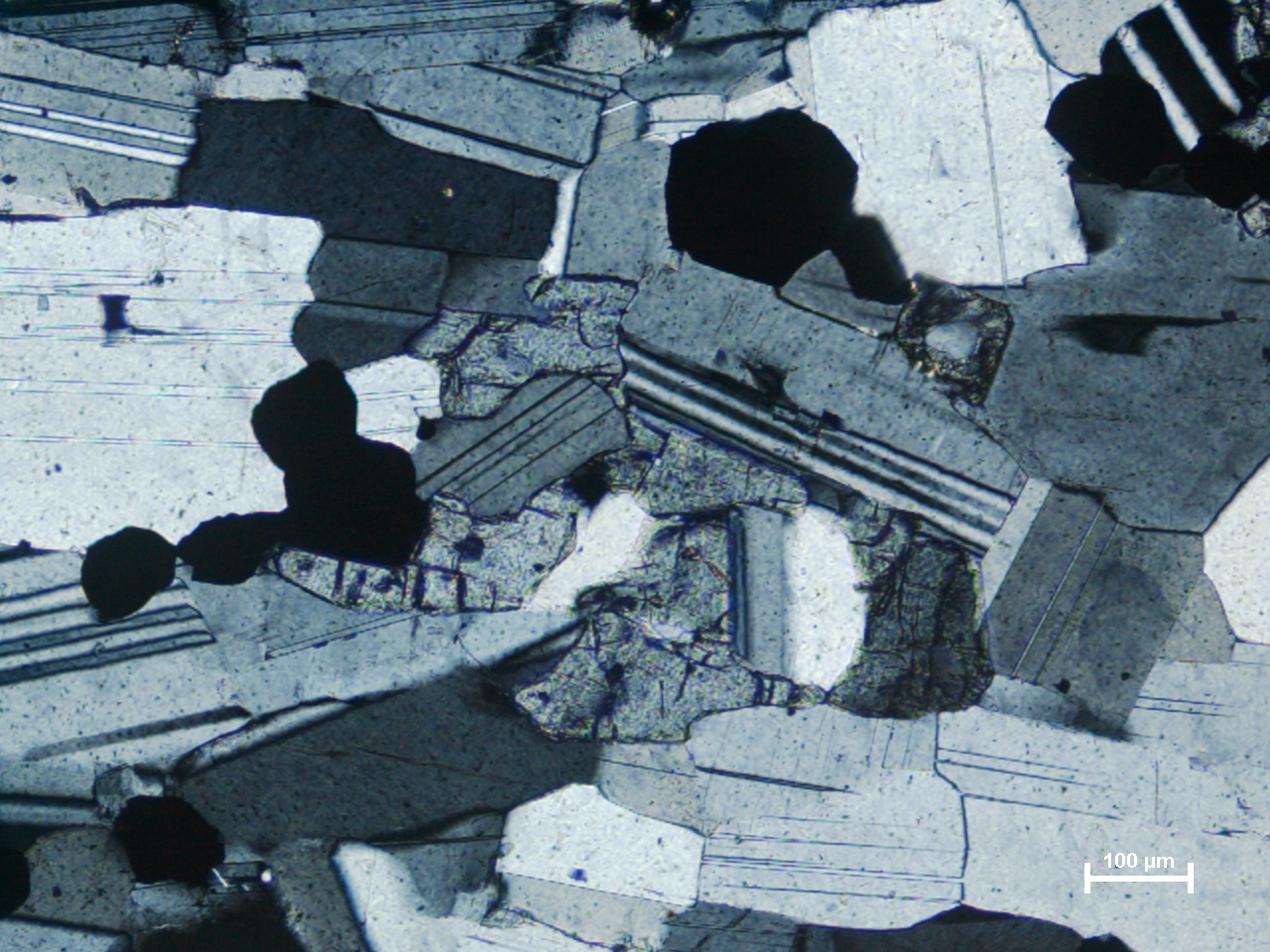
This high magnification view under cross polarised light, illustrates the the medium relief and cleavage as well as the characteristic low interference colours of the orthopyroxene.
|